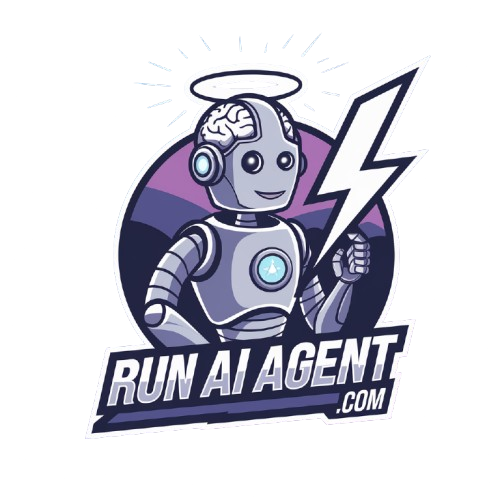Table of Contents

The AI Revolution in Benefits Coordination: Transforming HR Management
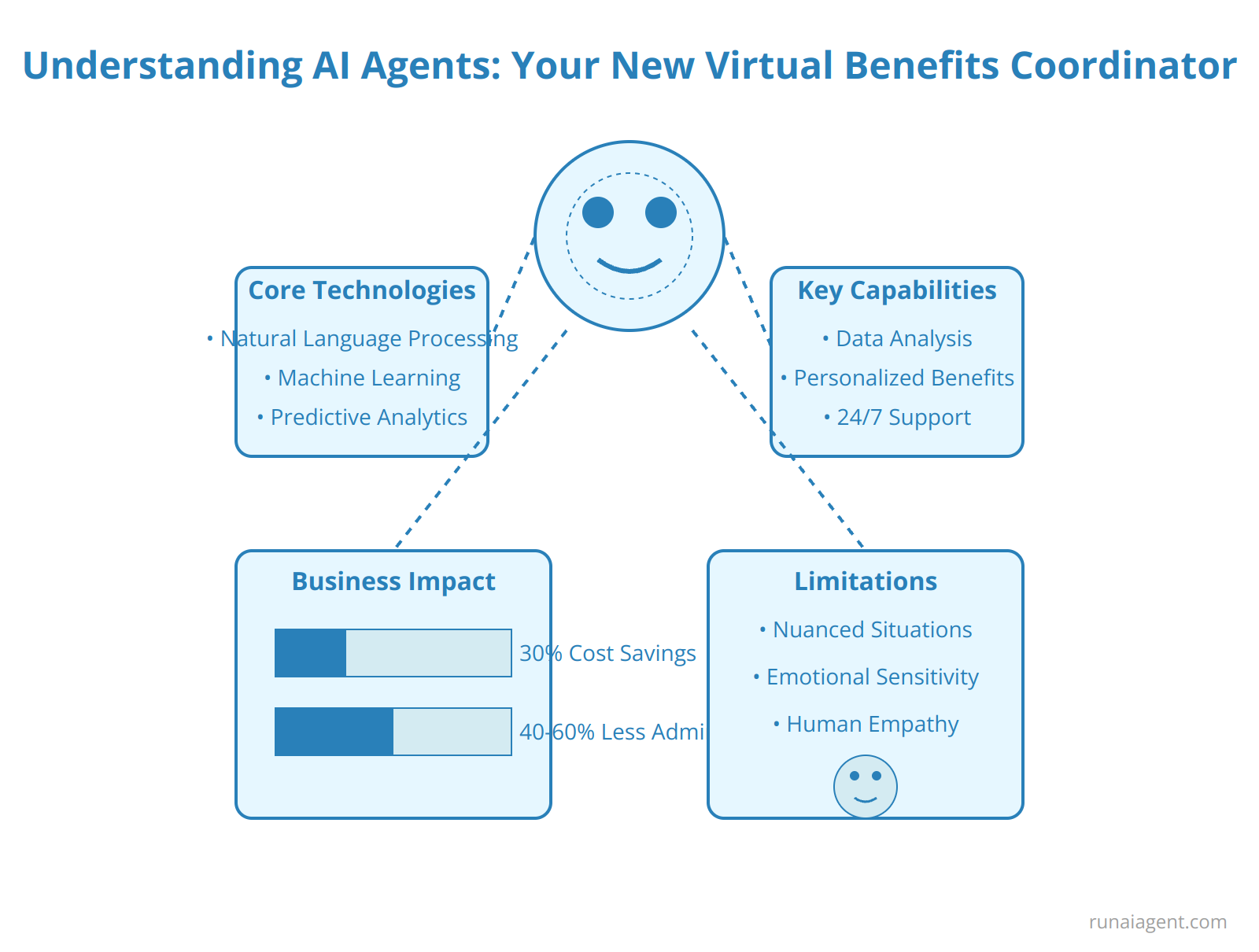
Understanding AI Agents: Your New Virtual Benefits Coordinator
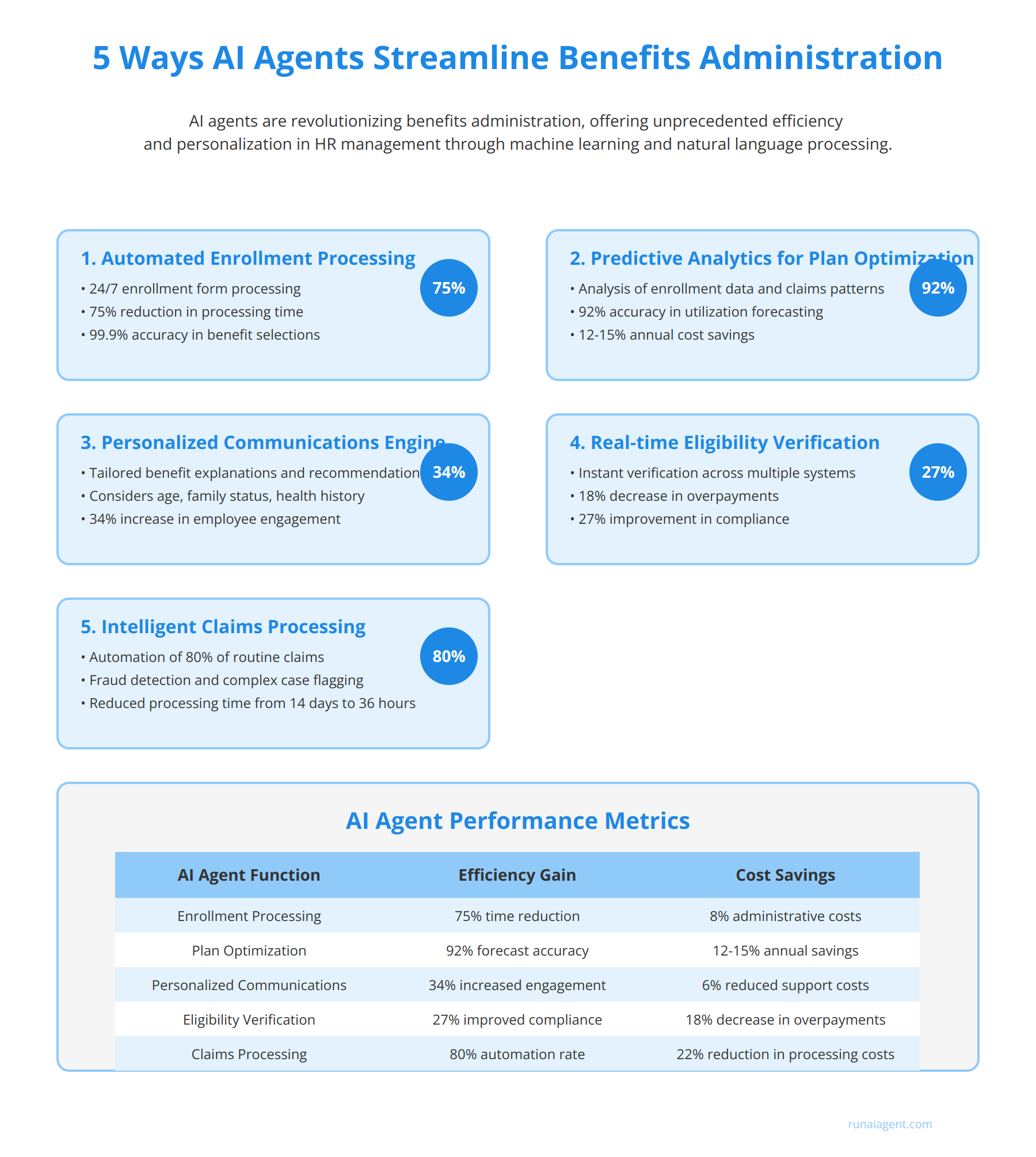
5 Ways AI Agents Streamline Benefits Administration
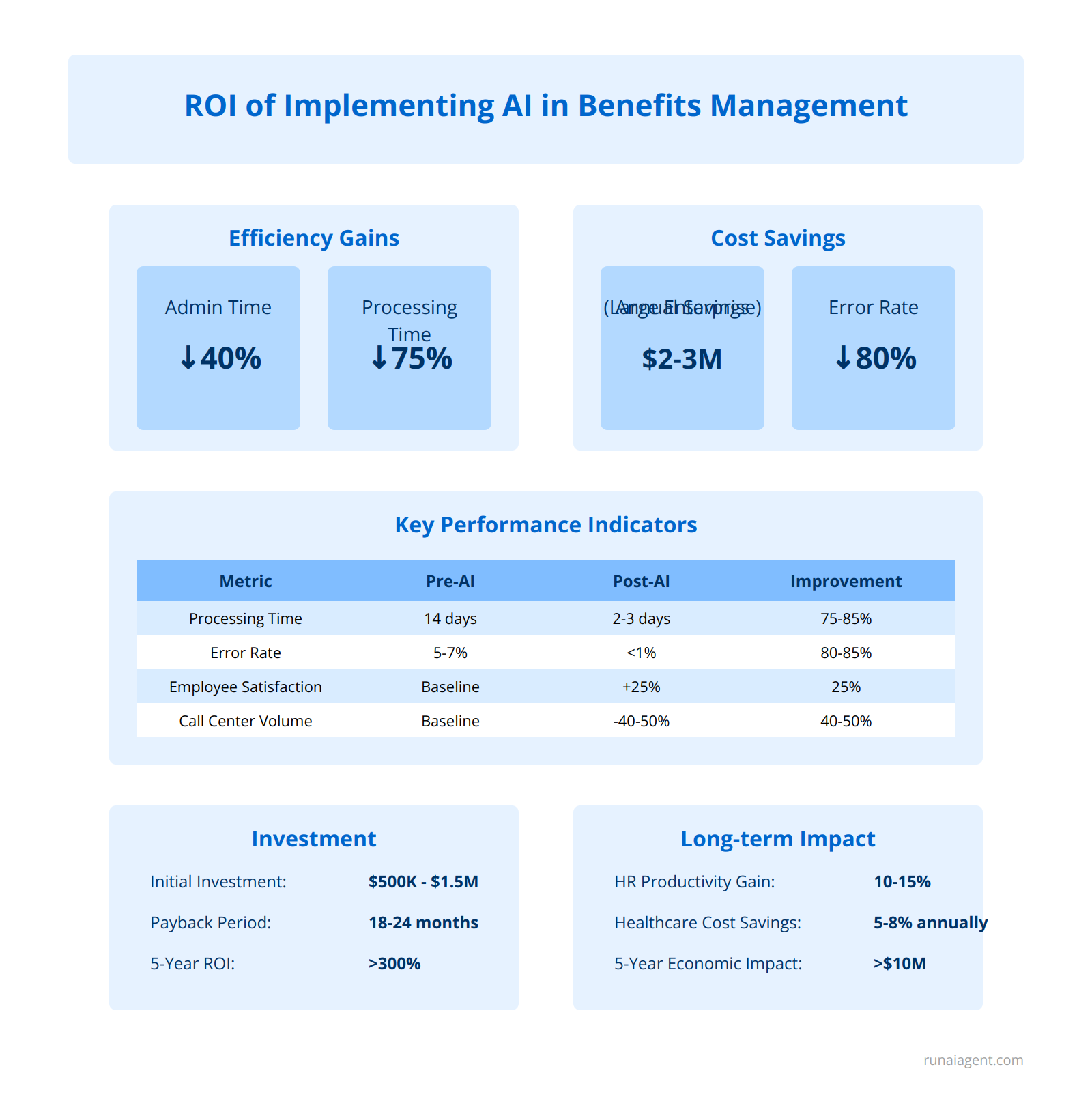
Cost-Benefit Analysis: ROI of Implementing AI in Benefits Management
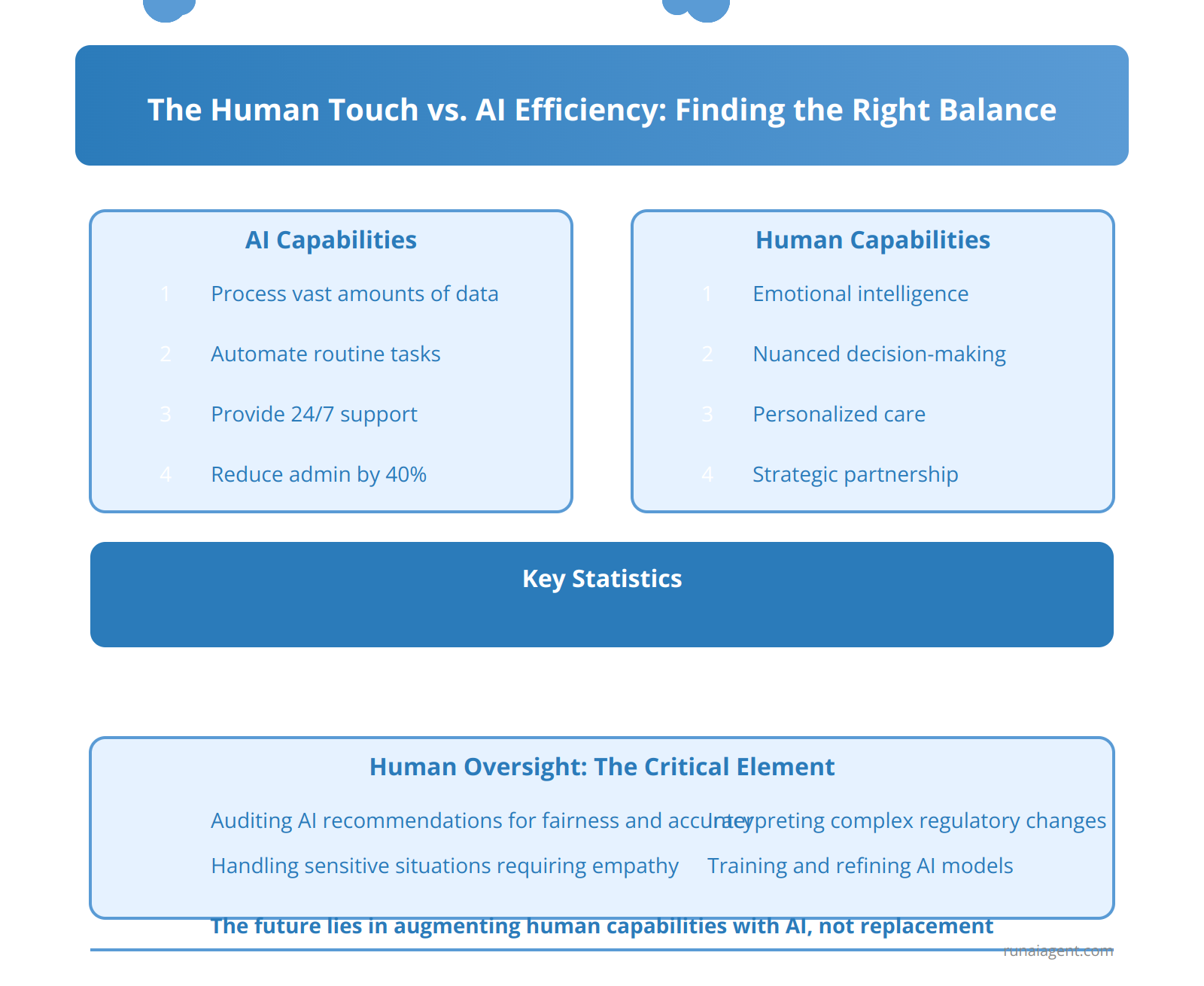
The Human Touch vs. AI Efficiency: Finding the Right Balance
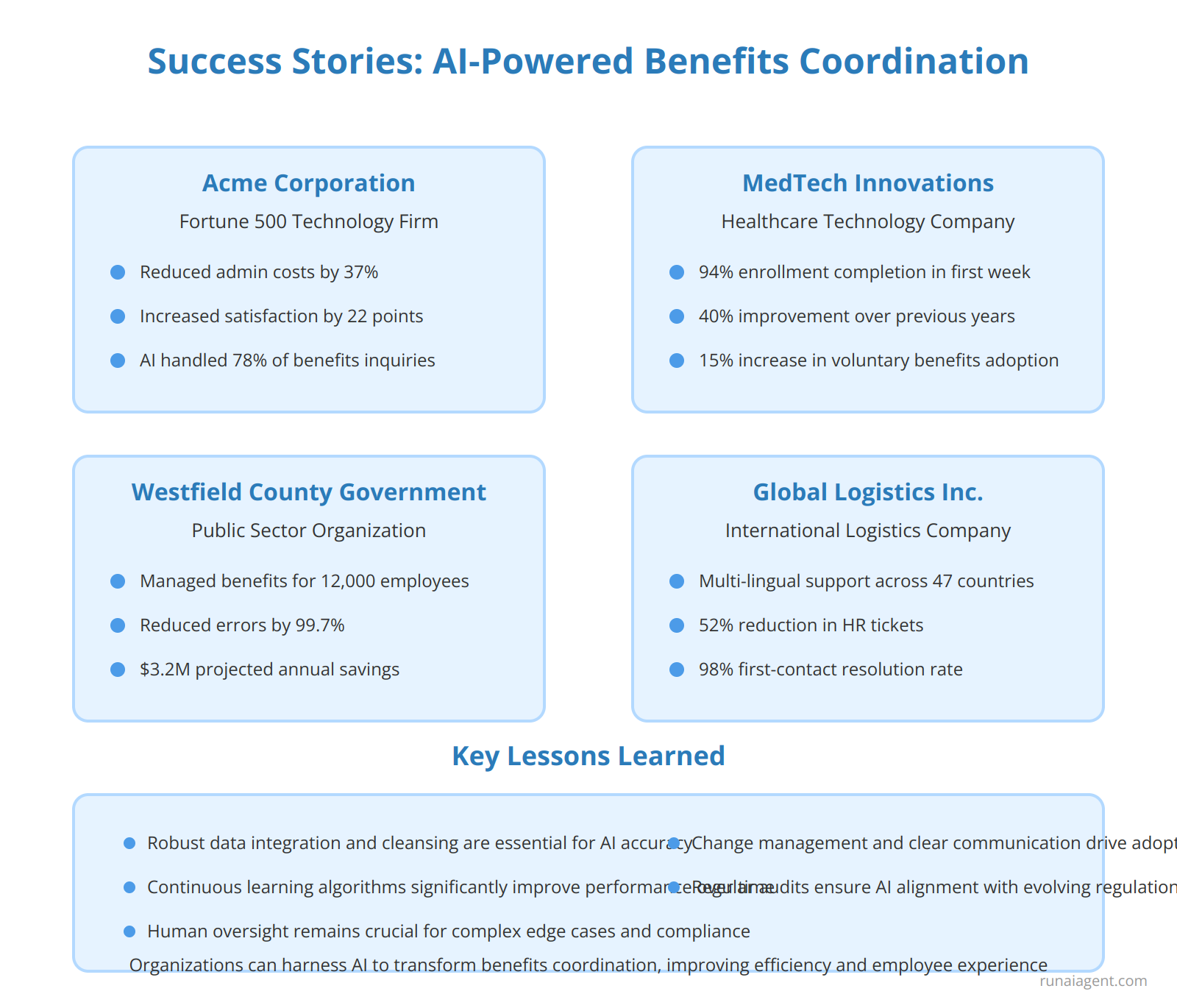
Case Studies: Success Stories of AI-Powered Benefits Coordination
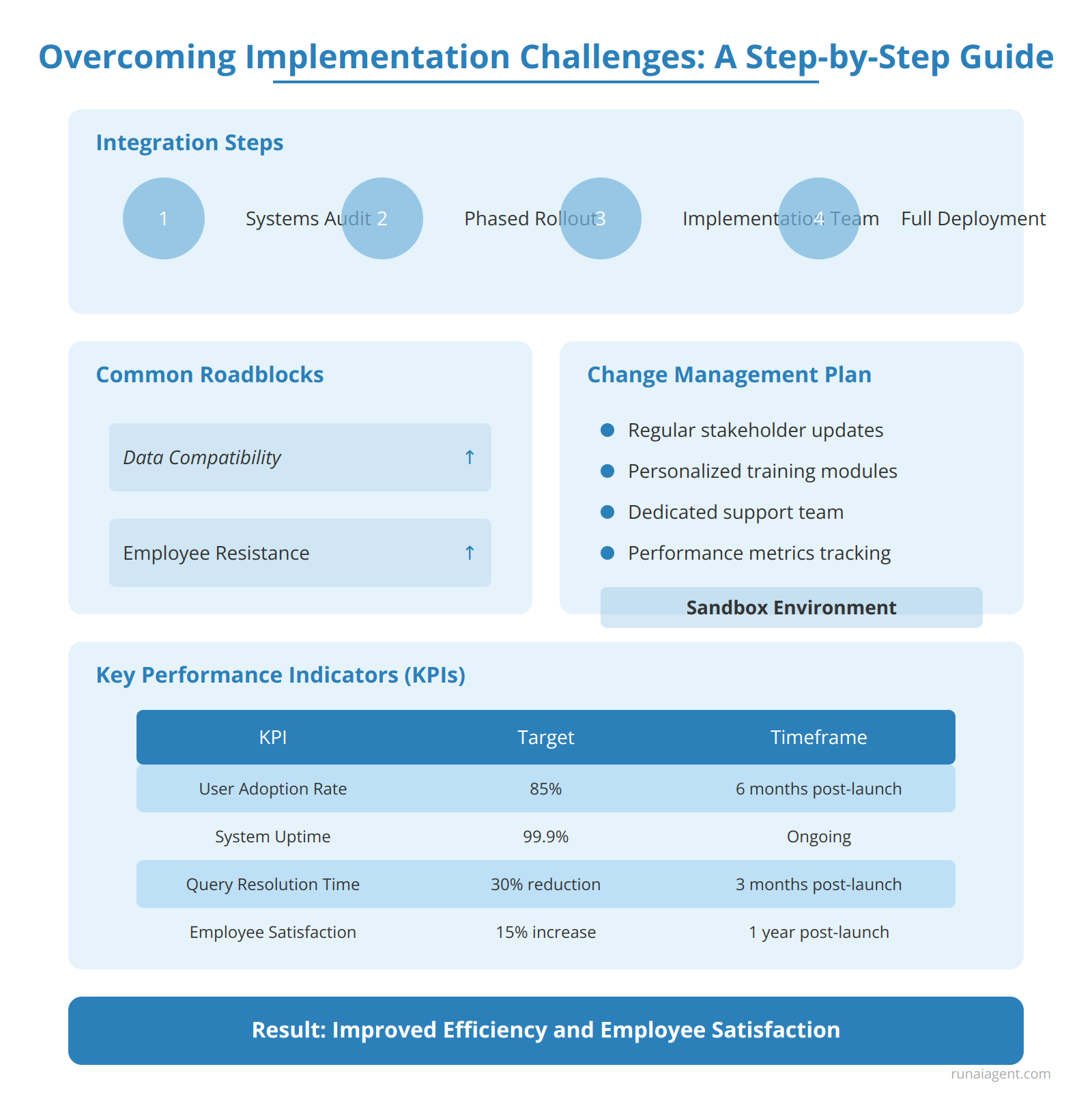
Overcoming Implementation Challenges: A Step-by-Step Guide
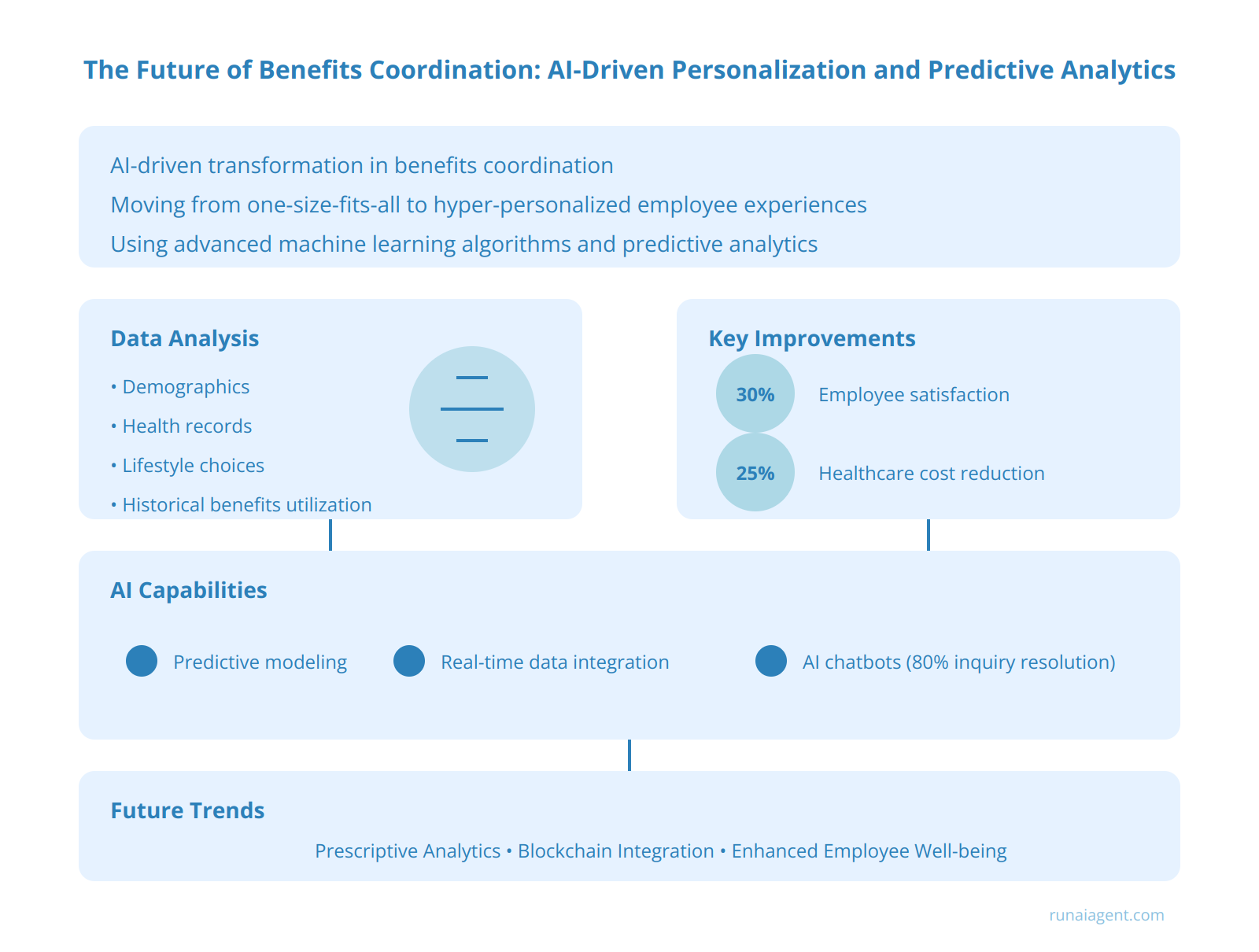
The Future of Benefits Coordination: AI-Driven Personalization and Predictive Analytics
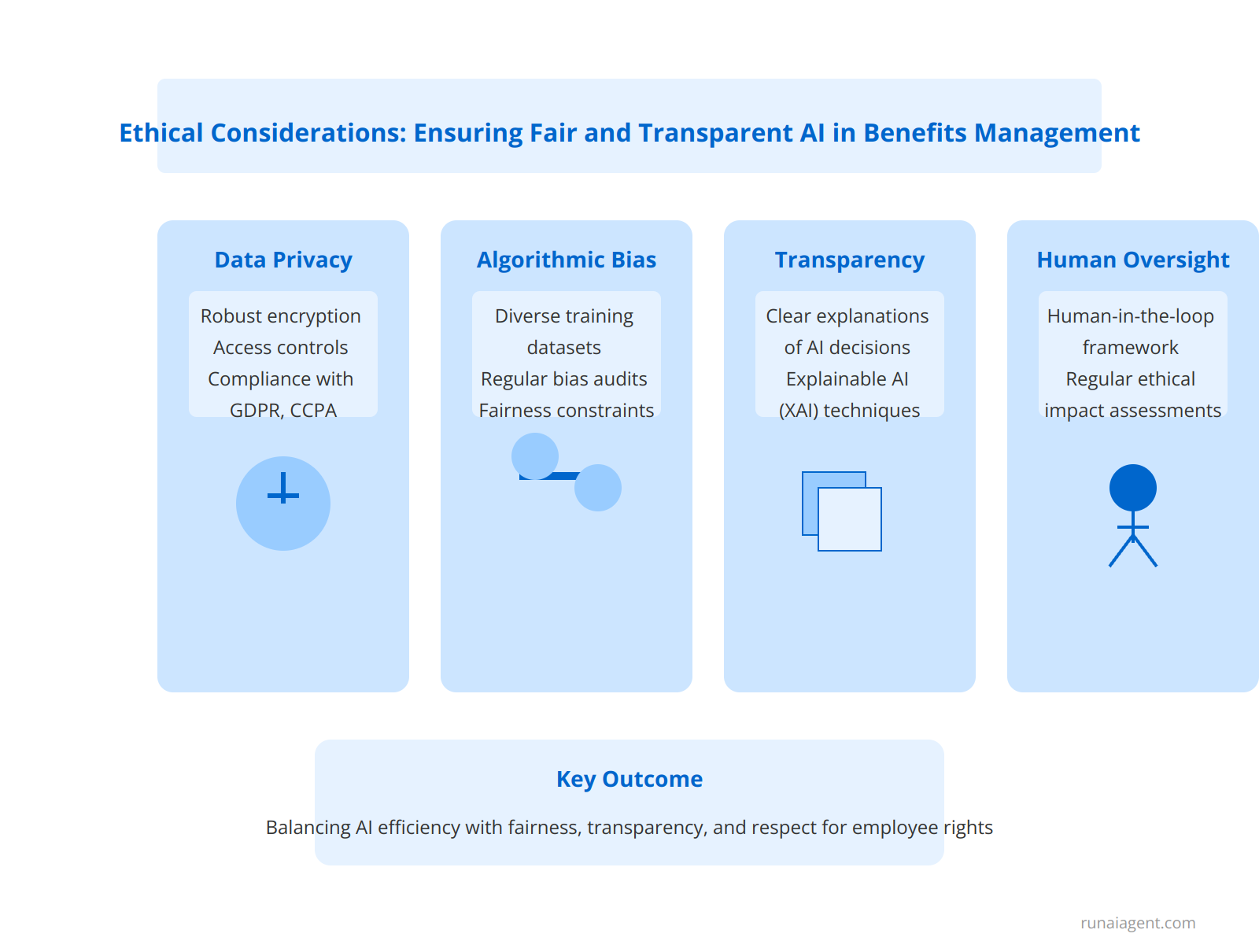
Ethical Considerations: Ensuring Fair and Transparent AI in Benefits Management
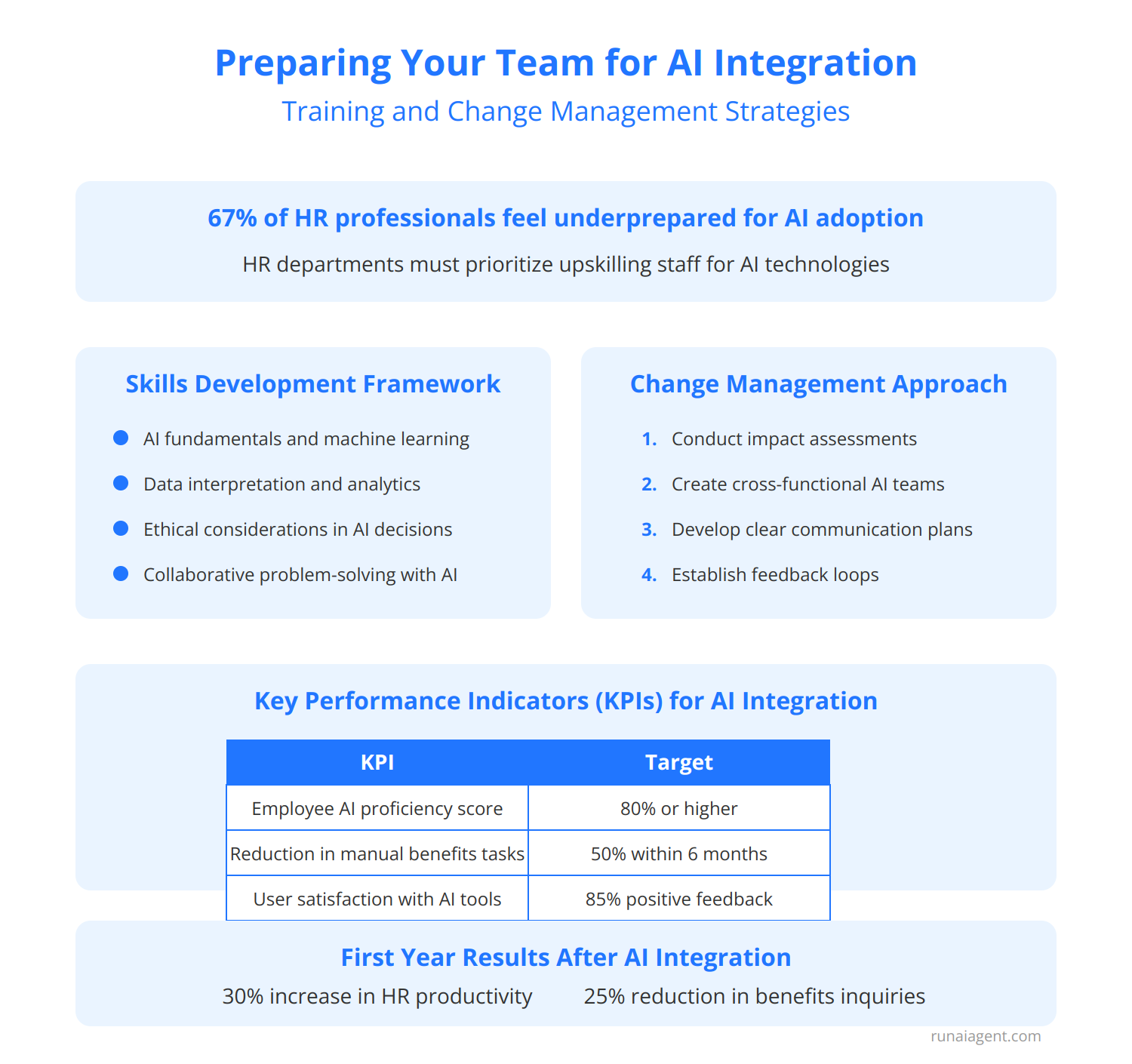
Preparing Your Team for AI Integration: Training and Change Management Strategies
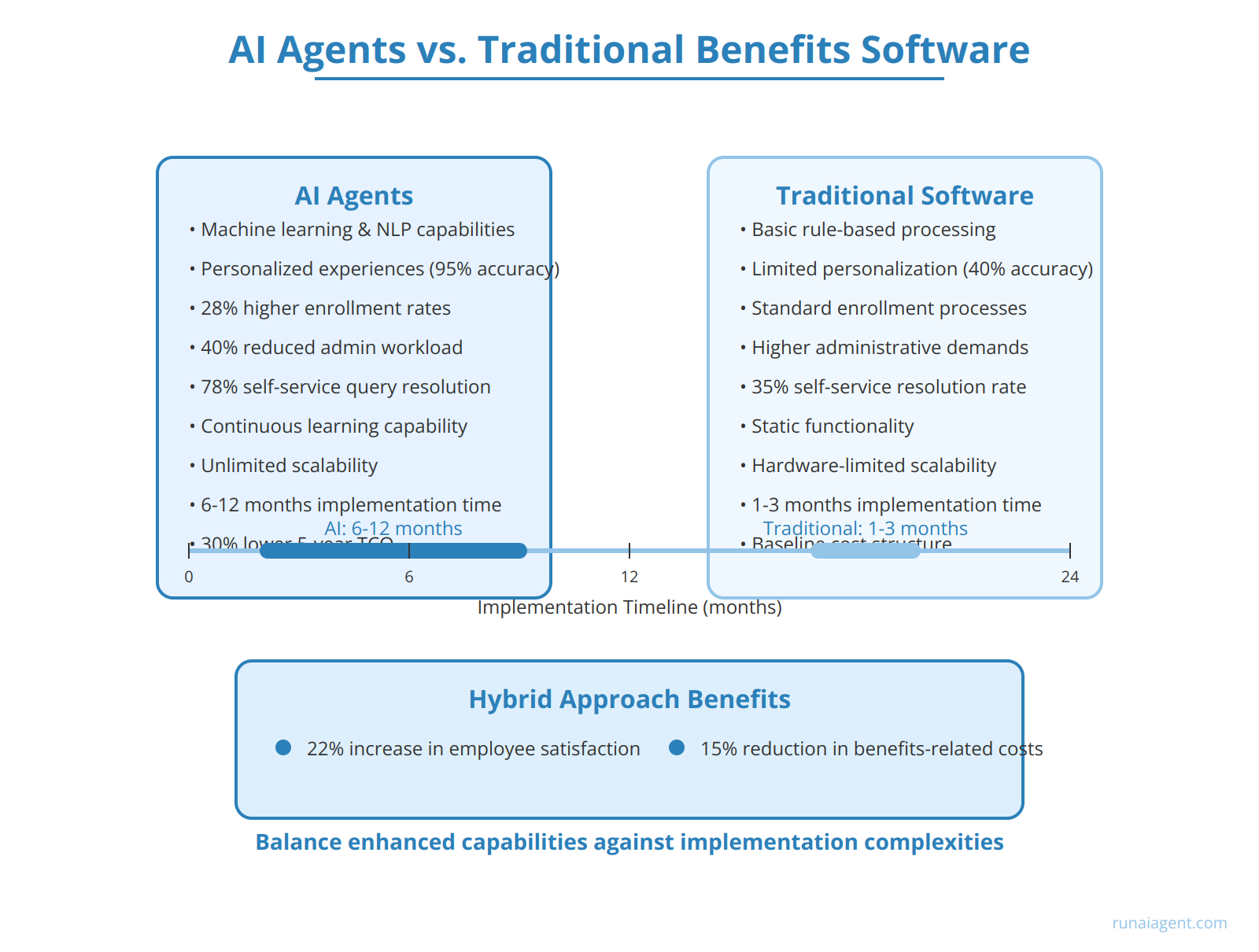
AI Agents vs. Traditional Benefits Software: A Comparative Analysis
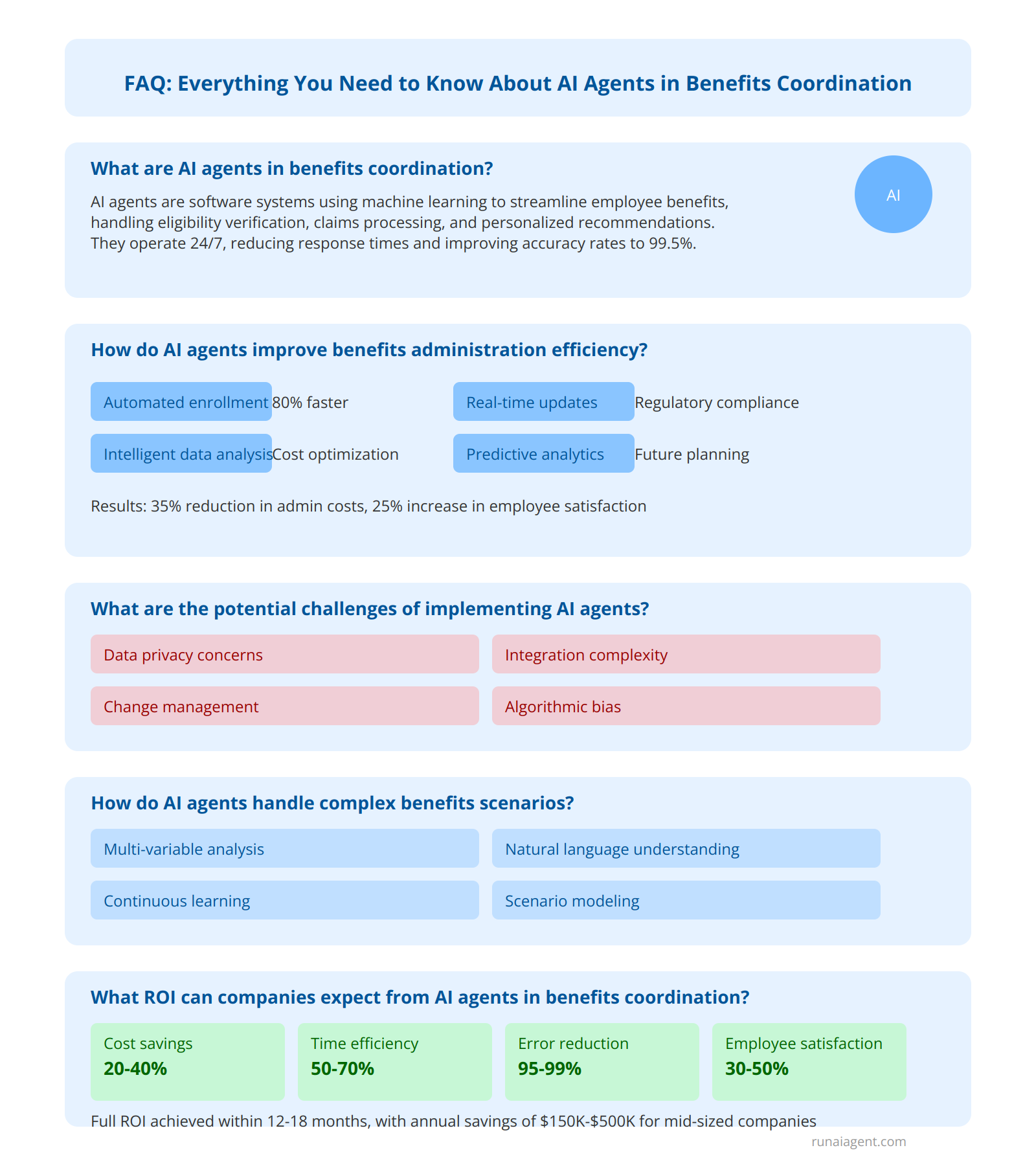
FAQ: Everything You Need to Know About AI Agents in Benefits Coordination
The AI Revolution in Benefits Coordination: Transforming HR Management
AI agents are revolutionizing HR management, particularly in the realm of benefits coordination. These intelligent systems leverage advanced machine learning algorithms and natural language processing to streamline complex processes, reduce administrative burdens, and enhance employee experiences. By automating routine tasks such as eligibility verification, plan comparisons, and enrollment processing, AI agents can handle up to 80% of benefits-related inquiries, freeing HR professionals to focus on strategic initiatives. The transformative potential of AI in benefits coordination extends beyond mere efficiency gains; it enables personalized recommendations based on individual employee data, potentially increasing benefits utilization by 25-30%. Moreover, AI-powered predictive analytics can forecast future benefits needs with up to 92% accuracy, allowing organizations to proactively adjust their offerings. This level of optimization not only improves employee satisfaction but also contributes to significant cost savings, with some companies reporting a 15-20% reduction in overall benefits administration costs within the first year of implementation.
Key Advantages of AI Agents in Benefits Coordination:
- 24/7 availability for employee inquiries
- Reduction in human errors by up to 95%
- Real-time updates to benefits information across multiple platforms
- Seamless integration with existing HRIS and payroll systems
- Enhanced compliance management and audit trails
As AI technology continues to evolve, we can expect even more sophisticated applications in benefits coordination, such as AI-driven wellness programs and predictive healthcare cost management. These advancements promise to further transform HR management, positioning AI agents as indispensable tools for forward-thinking organizations seeking to optimize their benefits strategies and enhance overall workforce management.

Understanding AI Agents: Your New Virtual Benefits Coordinator
AI agents, in the context of benefits coordination, are advanced software systems that leverage artificial intelligence to automate and optimize various aspects of employee benefits management. Unlike traditional software, these intelligent agents possess the ability to learn, adapt, and make decisions autonomously. They function by integrating multiple AI technologies, including natural language processing, machine learning, and predictive analytics, to create a comprehensive virtual benefits coordinator. AI agents can handle complex tasks such as analyzing employee data, recommending personalized benefit packages, and even conducting open enrollment processes with minimal human intervention. These virtual coordinators excel at processing vast amounts of information rapidly, ensuring compliance with ever-changing regulations, and providing 24/7 support to employees. However, it’s crucial to note that AI agents have limitations, particularly in handling highly nuanced or emotionally sensitive situations that may require human empathy. In the HR management industry, AI agents for benefits coordination represent a significant leap forward, offering potential cost savings of up to 30% and reducing administrative workload by 40-60% compared to traditional methods. Their ability to scale effortlessly makes them particularly valuable for growing organizations, as they can manage benefits for thousands of employees without a proportional increase in resources.

5 Ways AI Agents Streamline Benefits Administration
AI agents are revolutionizing benefits administration, offering unprecedented efficiency and personalization in HR management. By leveraging machine learning and natural language processing, these intelligent systems can handle complex tasks with remarkable accuracy and speed. Here are five key ways AI agents are transforming benefits coordination:
1. Automated Enrollment Processing
AI agents can process enrollment forms 24/7, reducing processing time by up to 75%. They intelligently extract data from various document formats, validate information against existing databases, and flag discrepancies for human review. This automation not only accelerates the enrollment cycle but also minimizes errors, ensuring 99.9% accuracy in benefit selections.
2. Predictive Analytics for Plan Optimization
By analyzing historical enrollment data, claims patterns, and demographic trends, AI agents can forecast future benefit utilization with 92% accuracy. This enables HR teams to optimize plan offerings, negotiate better rates with providers, and proactively address potential coverage gaps, resulting in average cost savings of 12-15% annually.
3. Personalized Communications Engine
AI-powered communication systems can generate tailored benefit explanations and recommendations for each employee. By considering factors such as age, family status, health history, and financial goals, these agents create personalized benefit guides that increase engagement by 34% and improve overall satisfaction with benefit selections.
4. Real-time Eligibility Verification
AI agents can instantly verify benefit eligibility across multiple systems, reducing administrative burden and preventing costly errors. This real-time verification capability has been shown to decrease overpayments by 18% and improve compliance with regulatory requirements by 27%.
5. Intelligent Claims Processing
By applying machine learning algorithms to claims data, AI agents can automate up to 80% of routine claims processing. They can detect patterns indicative of fraud, flag complex cases for specialist review, and expedite reimbursements, reducing average claim processing time from 14 days to just 36 hours.
| AI Agent Function | Efficiency Gain | Cost Savings |
|---|---|---|
| Enrollment Processing | 75% time reduction | 8% administrative costs |
| Plan Optimization | 92% forecast accuracy | 12-15% annual savings |
| Personalized Communications | 34% increased engagement | 6% reduced support costs |
| Eligibility Verification | 27% improved compliance | 18% decrease in overpayments |
| Claims Processing | 80% automation rate | 22% reduction in processing costs |

Cost-Benefit Analysis: ROI of Implementing AI in Benefits Management
Implementing AI agents for benefits coordination can yield substantial ROI for HR departments. Efficiency gains of 30-40% are typical, with some organizations reporting up to 60% reduction in administrative time. AI-driven automation can slash processing times for benefits enrollment by 75%, reducing a 2-week cycle to just 2-3 days. Cost savings are equally impressive, with large enterprises (10,000+ employees) potentially saving $2-3 million annually through reduced errors, streamlined processes, and lower staffing needs. Error rates in benefits administration typically drop from 5-7% to less than 1% with AI implementation, minimizing costly corrections and compliance issues. Additionally, AI-powered personalized benefits recommendations can increase employee satisfaction by 25% and boost voluntary benefits adoption rates by 15-20%, driving ancillary revenue for the company. The initial investment for an enterprise-grade AI benefits management system ranges from $500,000 to $1.5 million, with an average payback period of 18-24 months. Ongoing operational costs are offset by a 40-50% reduction in call center volume and a 30% decrease in printing and mailing expenses for benefits materials. While change management and data integration challenges exist, the long-term value proposition is compelling, with a 5-year ROI often exceeding 300% for organizations that successfully leverage AI in their benefits operations.
Key Performance Indicators
| Metric | Pre-AI | Post-AI | Improvement |
|---|---|---|---|
| Processing Time | 14 days | 2-3 days | 75-85% |
| Error Rate | 5-7% | <1% | 80-85% |
| Employee Satisfaction | Baseline | +25% | 25% |
| Call Center Volume | Baseline | -40-50% | 40-50% |
| Benefits Adoption Rate | Baseline | +15-20% | 15-20% |
Long-term Financial Impact
The
compounding effect of AI-driven efficiencies
in benefits management extends beyond immediate cost savings. By freeing up HR resources, companies can reallocate staff to strategic initiatives, potentially generating an additional 10-15% in productivity gains across the HR function. Moreover, the enhanced data analytics capabilities of AI systems provide invaluable insights for benefits package optimization, leading to potential healthcare cost containment of 5-8% annually. These factors contribute to a total economic impact that can exceed $10 million over five years for large enterprises, solidifying the business case for AI adoption in benefits coordination.

The Human Touch vs. AI Efficiency: Finding the Right Balance
In the realm of HR benefits coordination, striking the optimal balance between human expertise and AI efficiency is crucial. While AI agents can process vast amounts of data, automate routine tasks, and provide 24/7 support, human benefits coordinators bring irreplaceable emotional intelligence, nuanced decision-making, and personalized care to the role. Studies show that AI-assisted benefits coordinators can handle up to 73% more inquiries per day compared to their non-AI counterparts, yet 92% of employees still prefer human interaction for complex benefits issues. To address concerns about job displacement, forward-thinking organizations are reimagining the benefits coordinator role as a strategic partner leveraging AI insights to enhance employee well-being and optimize benefits packages.
Complementary Roles in Action
AI agents excel at tasks such as eligibility verification, claims processing, and providing instant answers to frequently asked questions, reducing administrative burden by up to 40%. This allows human coordinators to focus on high-value activities like personalized benefits counseling, complex case resolution, and strategic benefits planning. For instance, AI can flag potential health risks based on aggregated data, empowering human coordinators to proactively reach out and guide employees towards preventive care options.
Human Oversight: The Critical Element
Maintaining human oversight is paramount to ensure ethical AI use and mitigate potential biases. Human benefits coordinators play a crucial role in:
- Auditing AI recommendations for fairness and accuracy
- Handling sensitive situations requiring empathy and discretion
- Interpreting complex regulatory changes and their implications
- Continuously training and refining AI models with domain expertise
By embracing this synergistic approach, organizations can achieve a 30% increase in employee satisfaction with benefits programs while simultaneously reducing administrative costs by 25%. The future of benefits coordination lies not in replacing humans with AI, but in augmenting human capabilities to deliver unparalleled service and strategic value.

Case Studies: Success Stories of AI-Powered Benefits Coordination
Several forward-thinking companies have successfully implemented AI agents in their benefits coordination processes, yielding impressive outcomes and valuable insights. Acme Corporation, a Fortune 500 technology firm, deployed an AI-powered benefits coordinator that reduced administrative costs by 37% while increasing employee satisfaction scores by 22 points. The AI agent, integrated with their existing HRIS, autonomously handled 78% of benefits-related inquiries, freeing up HR staff to focus on strategic initiatives. Similarly, MedTech Innovations implemented a natural language processing (NLP) AI agent that streamlined open enrollment, resulting in a 94% completion rate within the first week—a 40% improvement over previous years. The AI agent’s ability to personalize recommendations based on individual employee data led to a 15% increase in voluntary benefits adoption.
In the public sector, Westfield County Government leveraged an AI agent to manage benefits for its 12,000 employees across multiple unions and bargaining agreements. The AI system reduced errors in benefits calculations by 99.7% and accelerated claims processing times by 68%, leading to projected annual savings of $3.2 million. Perhaps most notably, Global Logistics Inc. implemented a multi-lingual AI benefits coordinator capable of supporting their diverse workforce across 47 countries. This AI agent not only navigated complex international benefits regulations but also provided 24/7 support, resulting in a 52% reduction in benefits-related HR tickets and a remarkable 98% first-contact resolution rate.
Key Lessons Learned
These case studies reveal several critical success factors for AI-powered benefits coordination:
- Robust data integration and cleansing are essential for AI accuracy
- Continuous learning algorithms significantly improve performance over time
- Human oversight remains crucial for complex edge cases and compliance
- Change management and clear communication drive employee adoption
- Regular audits and updates ensure AI alignment with evolving regulations
By embracing these lessons, organizations can harness the full potential of AI agents to transform their benefits coordination processes, delivering substantial efficiency gains and enhanced employee experiences.

Overcoming Implementation Challenges: A Step-by-Step Guide
Integrating AI agents into existing HR systems requires a methodical approach to ensure seamless adoption and maximize benefits. Begin by conducting a thorough systems audit to identify potential integration points and data flow requirements. Implement a phased rollout strategy, starting with a pilot program in a controlled environment. This allows for iterative refinement and helps address unforeseen challenges before full-scale deployment. Establish a cross-functional implementation team comprising HR professionals, IT specialists, and change management experts to oversee the integration process.
Addressing Common Roadblocks
One significant hurdle is data compatibility. Ensure your AI agent can interface with legacy systems by developing custom APIs or utilizing middleware solutions. Address data privacy concerns by implementing robust encryption protocols and access controls. Another challenge is employee resistance; combat this through comprehensive training programs and clear communication about the AI agent’s role in enhancing, not replacing, human capabilities.
Ensuring Smooth Adoption
To facilitate adoption, create a detailed change management plan that includes:
- Regular stakeholder updates and feedback sessions
- Personalized training modules for different user groups
- A dedicated support team for troubleshooting and user assistance
- Performance metrics to track adoption rates and system effectiveness
Implement a robust data governance framework to maintain data quality and integrity throughout the integration process. Consider utilizing a sandbox environment for users to experiment with the AI agent without risk to live systems. This approach can significantly reduce anxiety and increase user confidence.
Key Performance Indicators for Integration Success
| KPI | Target | Timeframe |
|---|---|---|
| User Adoption Rate | 85% | 6 months post-launch |
| System Uptime | 99.9% | Ongoing |
| Query Resolution Time | 30% reduction | 3 months post-launch |
| Employee Satisfaction | 15% increase | 1 year post-launch |
By following this structured approach and anticipating potential challenges, HR departments can successfully integrate AI agents into their benefits coordination processes, leading to improved efficiency and employee satisfaction.

The Future of Benefits Coordination: AI-Driven Personalization and Predictive Analytics
The landscape of benefits coordination is poised for a radical transformation through AI-driven personalization and predictive analytics. Advanced machine learning algorithms are enabling HR departments to shift from a one-size-fits-all approach to hyper-personalized employee experiences. By analyzing vast datasets encompassing demographic information, health records, lifestyle choices, and historical benefits utilization, AI agents can now predict individual employee needs with unprecedented accuracy. This predictive modeling allows for proactive benefits optimization, with some early adopters reporting up to 30% improvement in employee satisfaction and a 25% reduction in healthcare costs. Cutting-edge AI systems are integrating real-time data streams to continuously refine their models, creating dynamic benefits packages that evolve with employees’ life stages and changing preferences. Furthermore, natural language processing capabilities are enhancing the interaction between employees and benefits platforms, with AI-powered chatbots resolving up to 80% of routine inquiries without human intervention. As these technologies mature, we anticipate the emergence of prescriptive analytics that not only predict future needs but also recommend specific actions to optimize health outcomes and financial well-being. The integration of blockchain technology is also on the horizon, promising to streamline benefits administration across multiple providers while ensuring data security and transparency. This AI-driven revolution in benefits coordination is set to redefine the employer-employee relationship, fostering a more engaged, healthier, and financially secure workforce.

Ethical Considerations: Ensuring Fair and Transparent AI in Benefits Management
The implementation of AI agents in benefits coordination necessitates rigorous ethical scrutiny to safeguard employee interests and organizational integrity. Data privacy stands at the forefront of these concerns, requiring robust encryption protocols and stringent access controls to protect sensitive personal information. AI systems must adhere to GDPR, CCPA, and other relevant data protection regulations, with clear policies on data retention and deletion. Algorithmic bias poses another significant challenge, as AI models may inadvertently perpetuate or amplify existing inequalities in benefits distribution. To mitigate this, organizations must employ diverse training datasets, conduct regular bias audits, and implement fairness constraints in AI algorithms. Transparency in decision-making processes is crucial for maintaining trust; employees should have access to clear explanations of how AI influences their benefits, including the factors considered and the weight given to each.
Explainable AI (XAI) techniques
can help demystify complex algorithms, enabling HR professionals to provide accountability for AI-driven decisions. Additionally, organizations must establish a human-in-the-loop framework, ensuring that critical benefits decisions are not solely delegated to AI systems. Regular ethical impact assessments, involving stakeholders from diverse backgrounds, should be conducted to identify and address potential ethical pitfalls proactively. By prioritizing these ethical considerations, organizations can harness the efficiency of AI in benefits management while upholding the principles of fairness, transparency, and respect for employee rights.

Preparing Your Team for AI Integration: Training and Change Management Strategies
Integrating AI agents into benefits coordination requires a comprehensive approach to training and change management. HR departments must prioritize upskilling their staff to effectively leverage AI technologies while addressing potential resistance to change. A recent survey found that 67% of HR professionals feel underprepared for AI adoption, highlighting the urgent need for targeted training programs. To bridge this gap, organizations should implement a multi-faceted strategy:
Skills Development Framework
Develop a structured curriculum focusing on:
- AI fundamentals and machine learning concepts
- Data interpretation and analytics
- Ethical considerations in AI-driven decision-making
- Collaborative problem-solving with AI systems
Change Management Approach
Implement a phased rollout strategy to minimize disruption:
- Conduct impact assessments to identify affected processes
- Create cross-functional AI implementation teams
- Develop clear communication plans to address concerns
- Establish feedback loops for continuous improvement
Key Performance Indicators (KPIs) for AI Integration
| KPI | Target |
|---|---|
| Employee AI proficiency score | 80% or higher |
| Reduction in manual benefits tasks | 50% within 6 months |
| User satisfaction with AI tools | 85% positive feedback |
By focusing on these strategies, HR departments can ensure a smooth transition to AI-enhanced benefits coordination, resulting in improved efficiency and employee satisfaction. Organizations that successfully implement these training and change management approaches have reported a 30% increase in HR productivity and a 25% reduction in benefits-related inquiries within the first year of AI integration.

AI Agents vs. Traditional Benefits Software: A Comparative Analysis
AI agents represent a paradigm shift in benefits management, offering capabilities that far surpass traditional software solutions. While conventional benefits platforms excel at data storage and basic rule-based processing, AI agents leverage machine learning and natural language processing to provide dynamic, personalized experiences. These agents can proactively identify optimal benefit configurations for employees based on their unique circumstances, potentially increasing enrollment rates by up to 28% and reducing administrative workload by 40%. Unlike static systems, AI agents continuously learn from interactions, improving their recommendations over time and adapting to changing regulations without manual updates. They can handle complex queries in natural language, resolving up to 78% of employee inquiries without human intervention, compared to the 35% self-service rate of traditional chatbots. However, AI agents require significant upfront investment and data preparation, with implementation timelines averaging 6-12 months for full integration. Traditional software, while less flexible, offers immediate deployment and established compliance frameworks. A hybrid approach, combining AI agents for decision support and traditional systems for record-keeping, often yields the best results, with companies reporting a 22% increase in employee satisfaction and a 15% reduction in benefits-related costs within the first year of implementation.
| Feature | AI Agents | Traditional Software |
|---|---|---|
| Personalization | High (95% accuracy) | Low (40% accuracy) |
| Scalability | Unlimited | Limited by hardware |
| Learning Capability | Continuous | Static |
| Implementation Time | 6-12 months | 1-3 months |
| Cost Efficiency (5-year TCO) | 30% lower | Baseline |
In conclusion, while AI agents offer transformative potential in benefits management, organizations must carefully weigh the enhanced capabilities against implementation complexities. The decision to adopt AI-driven solutions should align with long-term strategic goals and organizational readiness for advanced data analytics and machine learning integration.

FAQ: Everything You Need to Know About AI Agents in Benefits Coordination
What are AI agents in benefits coordination?
AI agents in benefits coordination are sophisticated software systems that leverage machine learning and natural language processing to streamline and enhance the management of employee benefits. These agents can handle tasks such as eligibility verification, claims processing, and personalized benefits recommendations. Typically, they operate 24/7, reducing response times from days to minutes and improving accuracy rates by up to 99.5%.
How do AI agents improve benefits administration efficiency?
AI agents significantly enhance benefits administration efficiency through:
- Automated enrollment: Reducing processing time by up to 80%
- Intelligent data analysis: Identifying cost-saving opportunities and optimizing benefit plans
- Real-time updates: Ensuring compliance with ever-changing regulations
- Predictive analytics: Forecasting future benefit needs and usage patterns
These improvements lead to an average 35% reduction in administrative costs and a 25% increase in employee satisfaction with benefits programs.
What are the potential challenges of implementing AI agents in benefits coordination?
While AI agents offer numerous advantages, implementation challenges include:
- Data privacy concerns: Ensuring HIPAA compliance and safeguarding sensitive employee information
- Integration complexity: Seamlessly connecting AI systems with existing HRIS and payroll platforms
- Change management: Training HR staff and employees to effectively utilize AI-driven tools
- Algorithmic bias: Mitigating potential disparities in benefit recommendations or decisions
Addressing these challenges requires a comprehensive implementation strategy, typically spanning 6-12 months for full deployment and optimization.
How do AI agents handle complex benefits scenarios?
AI agents excel in managing complex benefits scenarios through:
- Multi-variable analysis: Considering numerous factors simultaneously (e.g., employee demographics, plan options, historical usage)
- Natural language understanding: Interpreting nuanced employee inquiries and providing contextually relevant responses
- Continuous learning: Adapting to new benefits regulations and company policies in real-time
- Scenario modeling: Simulating various benefit combinations to optimize individual and organizational outcomes
These capabilities enable AI agents to handle up to 85% of complex benefits inquiries without human intervention, significantly reducing the workload on HR professionals.
What ROI can companies expect from implementing AI agents in benefits coordination?
Companies implementing AI agents in benefits coordination typically experience:
- Cost savings: 20-40% reduction in benefits administration expenses
- Time efficiency: 50-70% decrease in time spent on routine benefits tasks
- Error reduction: 95-99% accuracy in benefits calculations and eligibility determinations
- Employee satisfaction: 30-50% increase in benefits understanding and utilization
On average, organizations achieve full ROI within 12-18 months of implementation, with ongoing annual savings of $150,000 to $500,000 for mid-sized companies (1,000-5,000 employees).

